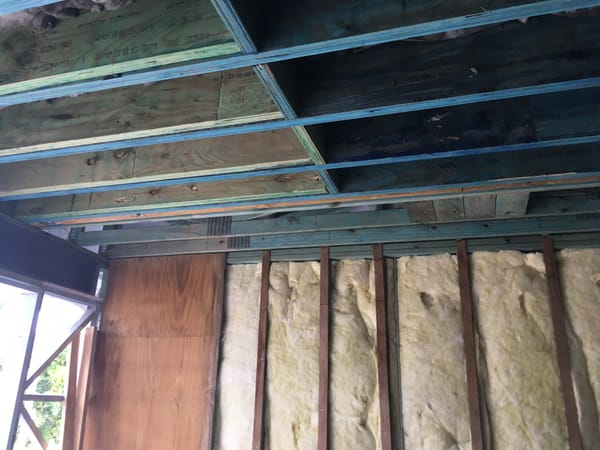If you're considering building a new home, you must know of potential issues like condensation. If not adequately managed, condensation can lead to problems like mould growth and structural damage. In this guide, we'll explain condensation in simple terms, provide practical examples of methods to reduce condensation and offer tips for maintaining a healthy and comfortable living environment.
What is Condensation?
Condensation occurs when warm, moist air comes into contact with a cold surface, causing the moisture in the mood to turn into liquid water droplets. You may have noticed condensation on windows during colder months. The exact process can happen in other areas of your home, such as walls, ceilings, and floors.
Causes of Condensation
Factors like outdoor climate, indoor moisture generation, and ventilation influence condensation. Here are a few examples to help you understand:
- Outdoor Climate: In colder climates, temperature differences between the inside and outside of your home can create conditions for condensation. Understanding your local climate patterns will help you anticipate potential condensation issues.
- Indoor Moisture Generation: Cooking, bathing, and drying clothes release moisture. Without proper ventilation, this excess moisture can contribute to condensation.
Adequate ventilation helps remove excess moisture from your home. Ensuring your home has proper airflow is essential, especially in areas prone to moisture buildup.
Methods to Reduce Condensation
Now, let's explore practical examples of methods you can implement to reduce condensation in your new home:
Proper Insulation: Adequate insulation helps maintain a consistent temperature throughout your home. Insulating walls, ceilings, and floors can prevent cold surfaces that lead to condensation. Consider consulting a professional to ensure you have proper insulation installed.
Ventilation Strategies: Good ventilation is critical to reducing condensation. Here are a few strategies you can use:
- Use Exhaust Fans: Install exhaust fans in areas prone to moisture, such as bathrooms and kitchens. These fans help remove humid air and prevent it from spreading to other parts of your home.
- Opening windows when weather permits allow fresh air to circulate, reducing humidity levels.
- Use Dehumidifiers: Dehumidifiers can help control moisture levels, especially in areas with high humidity.
- Proper Use of Heating and Cooling Systems: Maintaining a consistent temperature in your home can help reduce condensation. Here are some tips:
- Avoid Over cooling: During warmer months, it's best to avoid pre-chilling an unoccupied home. Instead, set your air conditioner to a comfortable temperature.
- Seek Informed Advice: When choosing an air conditioning system, consult professionals who can help you select a system that can effectively control both temperature and humidity.
Condensation in buildings during construction
Condensation is a common issue in buildings that can lead to problems such as mould growth, structural damage, and poor indoor air quality. To create a comfortable and healthy living or working environment, it is crucial to understand and effectively manage condensation.
This section will explore the factors contributing to indoor condensation, the control functions needed in the building envelope, and strategies to reduce the risk of condensation during construction.
Factors Affecting Indoor Water Vapour Levels
Three main factors influence indoor water vapour levels: outdoor climate, indoor water vapour generation, and ventilation. The outdoor environment determines the moisture content of the air that enters the building. Indoor water vapour generation includes cooking, bathing, and drying clothes, which release moisture into the indoor environment. Ventilation is crucial in removing excess moisture and maintaining proper air circulation.
Control Functions in the Building Envelope
To avoid excessive relative humidity (RH) and condensation, four control functions are needed in the building envelope:
Thermal Insulation: Adequate insulation helps maintain a temperature gradient between the indoor and outdoor surfaces, preventing condensation from forming on cold surfaces.
Vapour Retarders: Vapour retarders, such as vapour barriers or vapour diffusion-resistant materials, hinder the movement of moisture-laden air through the building envelope, reducing the risk of condensation.
Air Barriers: Properly installed air barriers minimise air leakage, which can transport moisture into the building envelope and cause condensation. They improve the overall energy efficiency of the building as well.
Ventilation: Effective ventilation systems remove excess moisture from the indoor environment, ensuring a healthy and comfortable living or working space. Balanced ventilation with heat recovery is particularly beneficial in cold climates, as it allows fresh air intake while minimising heat loss.
Strategies to Reduce Condensation Risk During Construction
During the construction phase, it is essential to implement strategies that reduce the risk of condensation. Some critical plans include:
- Controlling Moisture Sources: Properly sealing plumbing fixtures, using moisture-resistant materials, and implementing temporary ventilation systems can help retain moisture during construction activities.
- Monitoring Indoor Humidity: Regular monitoring of indoor humidity levels can provide valuable insights into potential condensation issues. If elevated humidity levels are detected, prompt action can be taken to mitigate the risk.
- Proper Ventilation: Temporary ventilation systems, such as portable fans or dehumidifiers, can maintain adequate air circulation and control moisture levels during construction.
- Building Envelope Design: Optimising the design of the building envelope, including insulation, vapour retarders, and air barriers, can significantly reduce the likelihood of condensation issues.
Conclusion
Condensation in buildings is a complex and influenced by various factors. The risk of condensation can be effectively managed by understanding the factors affecting indoor water vapour levels, implementing the necessary control functions in the building envelope, and following proper construction strategies.
It is important to prioritise moisture control during the design and construction phases to create a comfortable and durable building that promotes occupant health and well-being.
References
- Condensation in Buildings Handbook, abcb.gov.au
Further Reading












